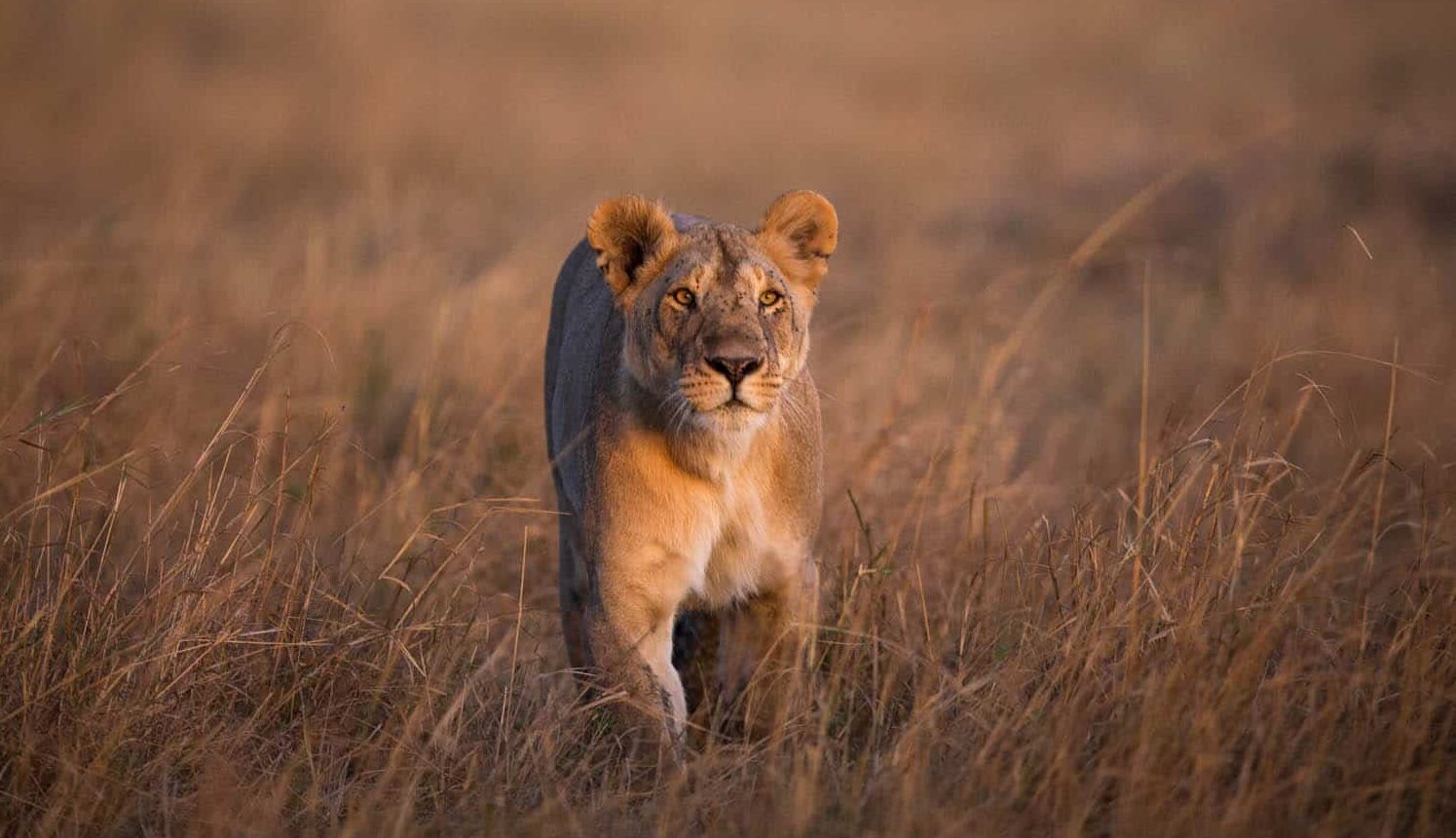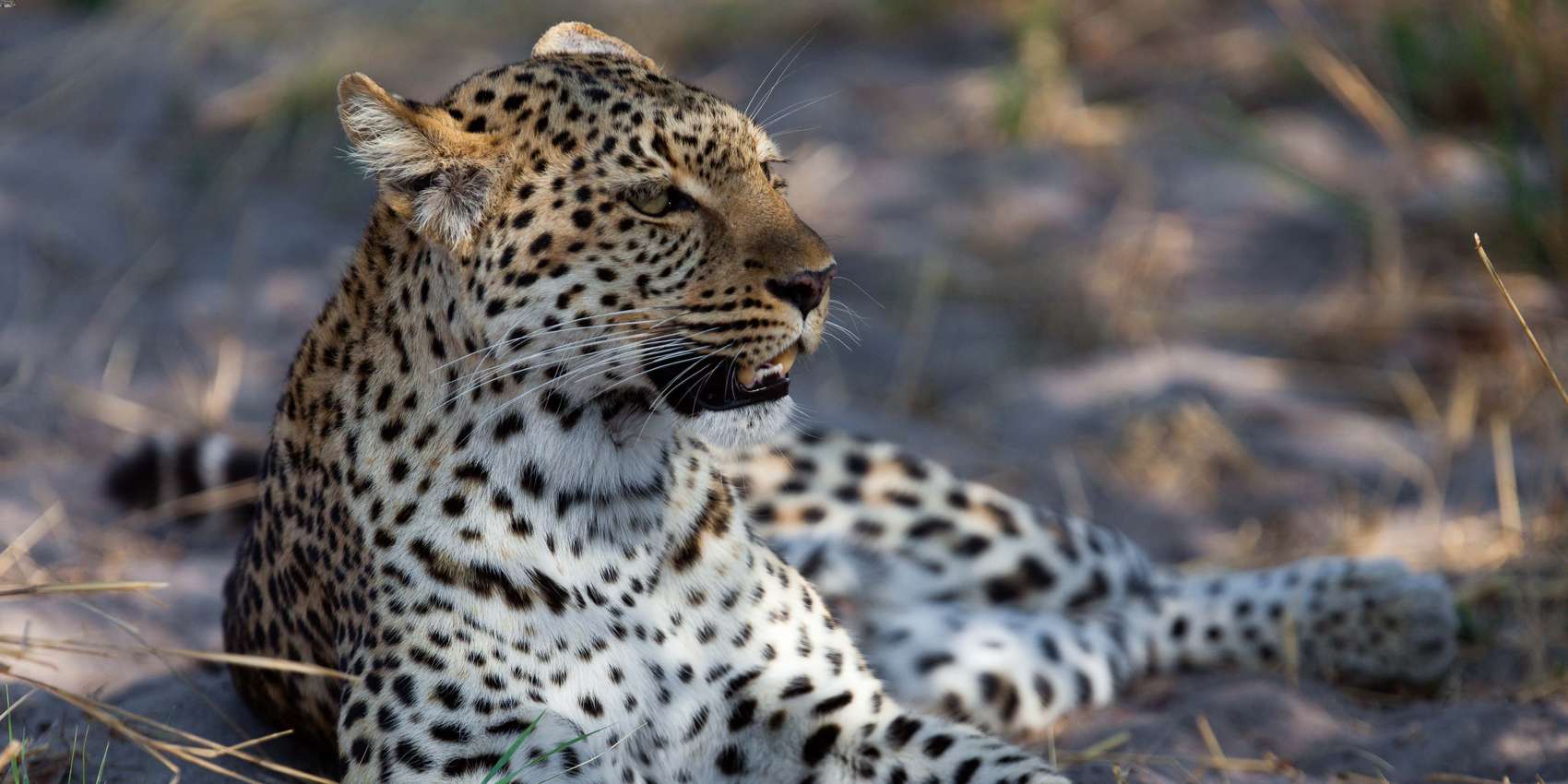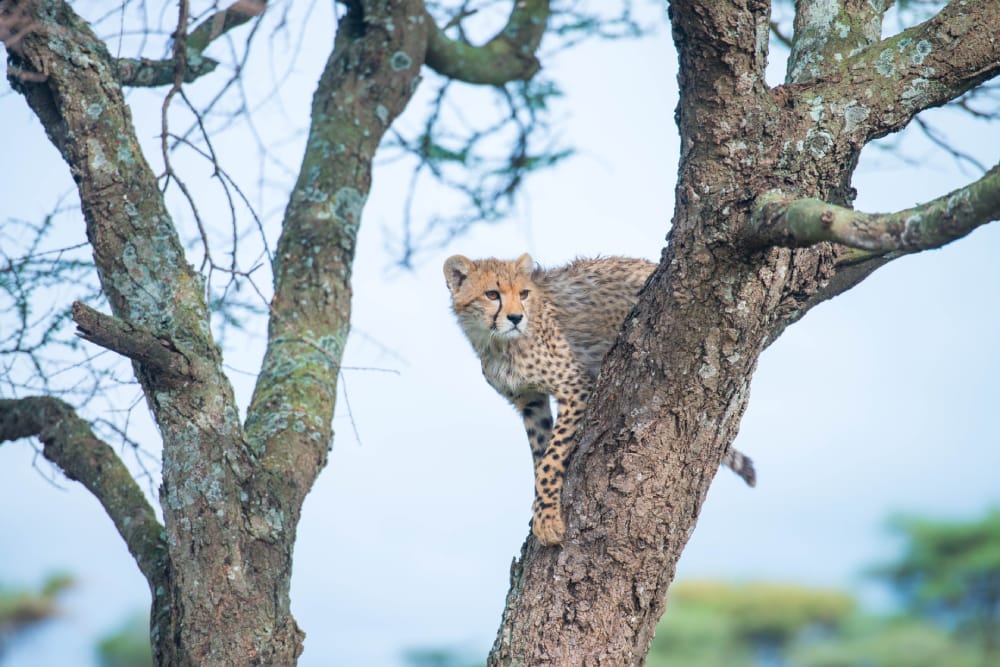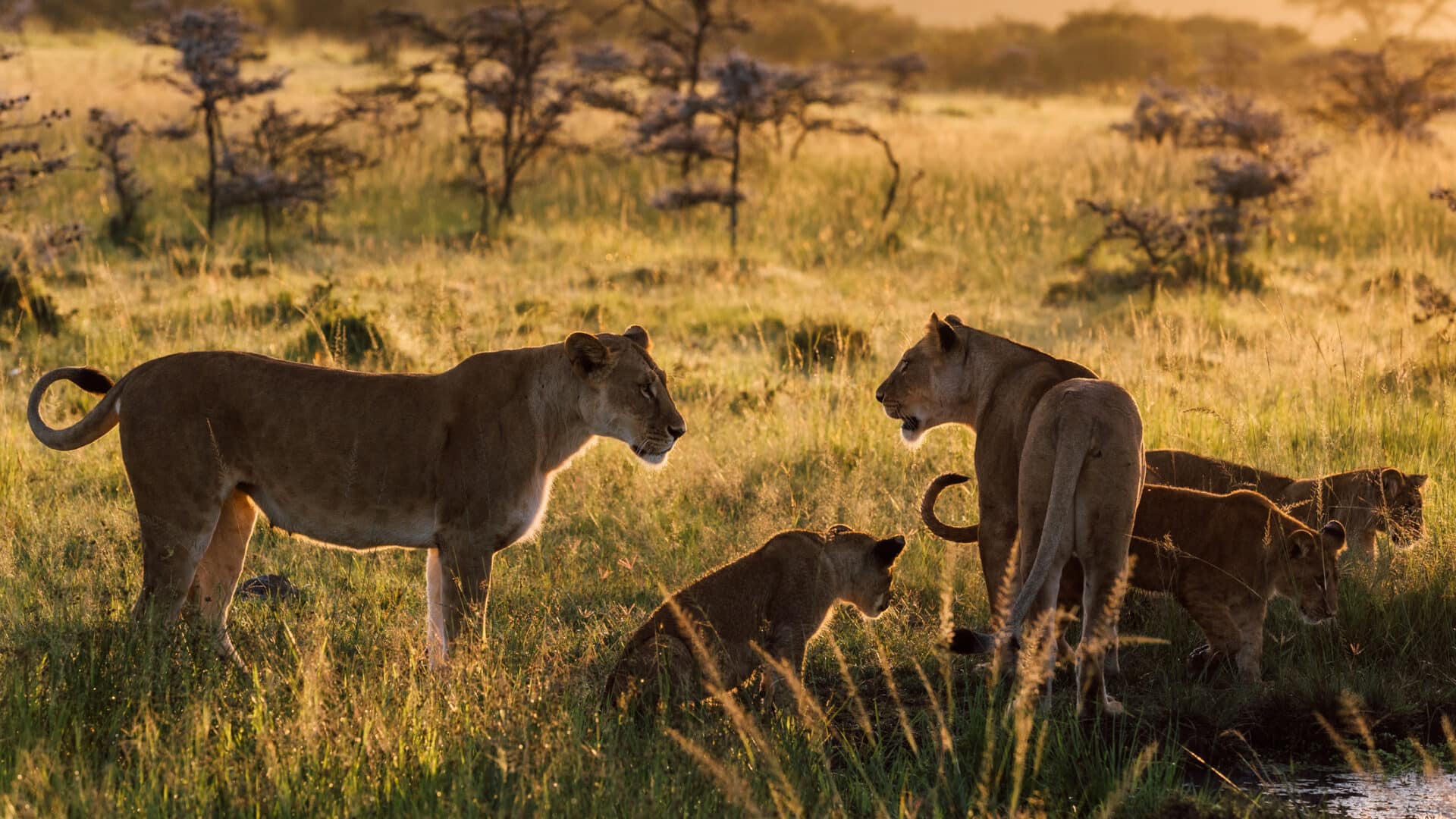An East Africa safari can take you across varied and spectacular landscapes, including environments where Africa’s famed big cats live and hunt. Lions, leopards, and cheetahs can all be seen in national parks in Tanzania, Kenya, and Uganda during East African big cat safaris.
Why Should You Go on an East African Big Cat Safari?

See Apex Predators in Their Natural Habitats
Imagine seeing a pride of lions lazing in the sunshine while their cubs play, spotting a leopard draped over a tree branch, or witnessing a cheetah dart across the landscape chasing its dinner. These experiences are highlights of any safari adventure.
Predator-Prey Dynamics
The potential to witness a hunt, whether successful or not, is a dramatic and often intensely emotional spectacle that illustrates the raw reality of the African bush. It’s a living, breathing wildlife documentary unfolding before your very eyes.
Contribute to Conservation Efforts
Your safari can contribute directly to conservation initiatives that work hard to sustain environments and protect these beautiful big cats.
Gain a Deeper Insight into Ecosystems
Big cats are keystone species. This means they play a vital role in maintaining the balance of their ecosystems. By observing them, you gain a deeper appreciation for how all elements of nature are interconnected.
Best Destinations for East African Big Cat Safaris

Serengeti National Park, Tanzania
The plains of the Serengeti National Park are known for one of the most awe-inspiring natural events on the African calendar: the Great Wildebeest Migration. Millions of wildebeest can be seen traversing the savannah on their way to Kenya. Trailing the herds are big cats, making a Great Migration safari a prime opportunity to see predator-prey dynamics. Lions, leopards, and cheetahs all call this famous region home, making for the perfect destination for a big cat safari in East Africa.
Masai Mara National Reserve, Kenya
Lions, cheetahs, and leopards can all be found across the Masai Mara thanks to the impressive populations of herbivores. This is also one of the locations along the annual Great Migration route. The river crossings are dramatic, with wildebeest doing their best to navigate the waters while dodging predators – including crocodiles.
Samburu National Park, Kenya
For a more secluded big cat safari adventure, consider Samburu National Park. Set in the north of Kenya, this park doesn’t see nearly the amount of tourists as the more famous Masai Mara. It’s also one of the best places in the country to see leopards.
Queen Elizabeth National Park, Uganda
This national park is one of the best places for a lion safari in Africa as it’s home to something quite unusual: tree-climbing lions! These lions inhabit the Ishasha and Kasenyi Plains, where they can be seen climbing trees and resting among the branches. Queen Elizabeth National Park is a Big Four safari destination in East Africa, so leopards can also be seen.
5 Tips for East African Big Cat Safaris

1. Go in the Dry Season
During the dry season (June to October), the vegetation dries up along with watering holes, which often makes wildlife easier to spot. The Great Migration also occurs during the dry season – a fantastic time to witness dramatic predator and prey interactions.
2. Visit a Private Conservancy
One of the benefits of going on safari in a private conservancy is that you’re often able to go off-road for sightings and go on game drives at any time of the day.
3. Explore at Night
Some private conservancies offer nighttime game drives, which can be excellent for spotting nocturnal predators like leopards. You might even witness a nighttime hunt.
4. Bring Binoculars
Binoculars are a must-bring for a safari. A pair of good-quality binoculars can vastly improve your safari experience, as you’re able to get close-up views.
5. Be Patient
Remember, game reserves and national parks are wild spaces – guides don’t know where big cats are going to be. Spotting wildlife requires patience. Most importantly, always follow your guide’s instructions. Remember: these are wild animals, and maintaining a respectful distance is key for both your safety and their well-being.


















